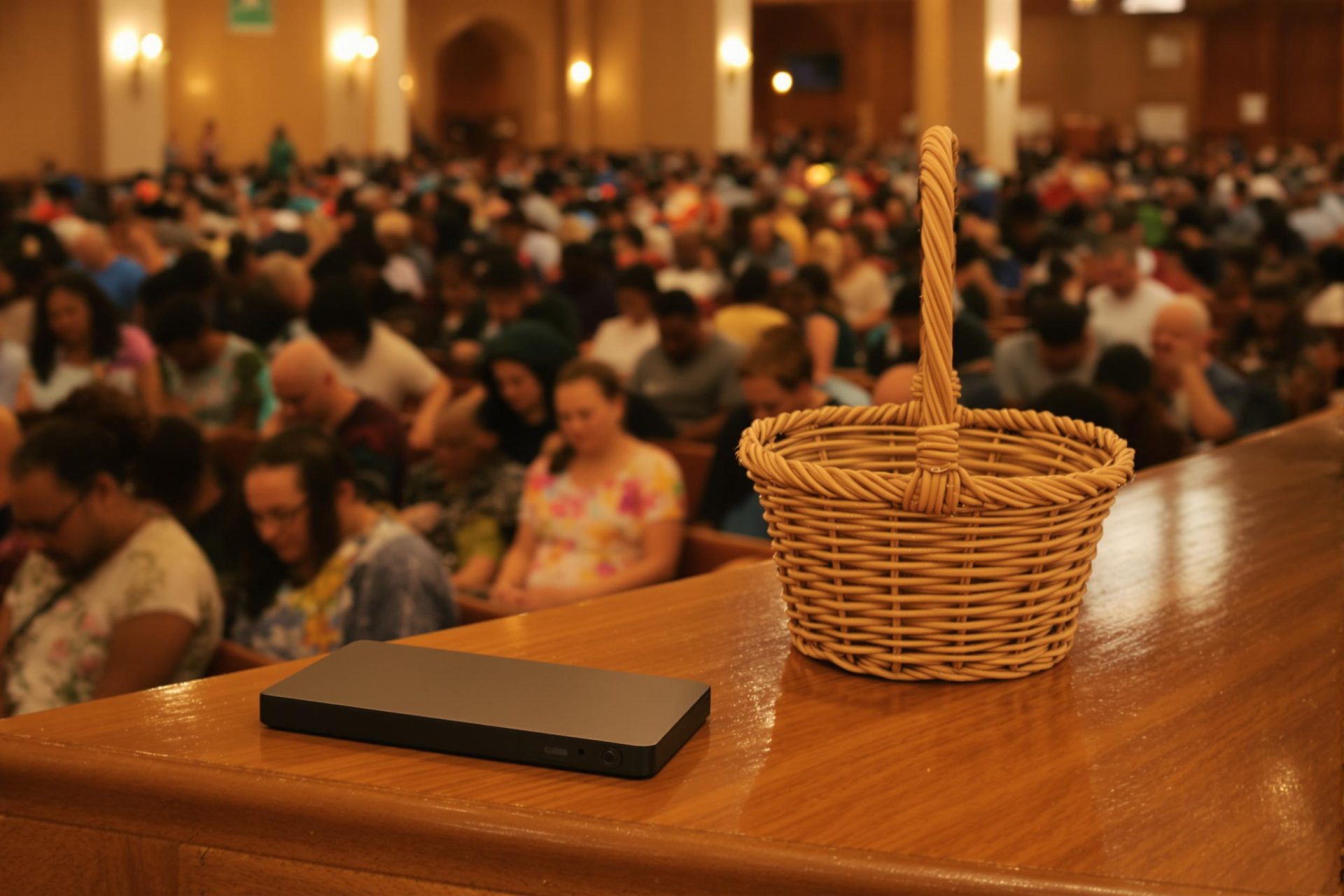Key Takeaways
- U.S. churches are increasingly embracing modern technology to enhance their ministry.
- Artificial intelligence (AI) use in churches has seen a dramatic 80% increase, primarily for communication and content creation.
- Livestreaming services, a practice that boomed during the pandemic, remains a highly popular tool for worship.
- Online giving is now standard, with a significant number of churches also exploring cryptocurrency donations.
- Church leaders view technology as a way to expand their mission and community engagement, not to replace personal interaction.
Thinking about church on Sunday might conjure images of tradition, but many U.S. congregations are now weaving modern technologies like artificial intelligence and even Bitcoin into their operations.
This evolving landscape is detailed in the “2025 State of Church Tech report” by Pushpay, a company providing financial services to churches. The report is based on a survey of over 1,700 church leaders from various denominations and sizes across the United States.
According to Gruia Pitigoi-Aron, Pushpay’s chief product officer, the most “tech-forward churches” no longer see technology as purely for administrative tasks. Instead, Business Insider reports they view it as integral to their mission.
Recent breakthroughs in AI have clearly not been overlooked by religious institutions. The Pushpay report found that 45% of church leaders surveyed now use artificial intelligence, a remarkable 80% jump from the previous year.
Most commonly, AI assists with communication-based tasks, such as writing content, editing materials, and generating graphic designs. Notably, 18% of leaders also reported using AI to help develop sermons.
The rapid rise of AI is prompting broader discussions within religious communities about its impact on society, human dignity, and ethical considerations, acknowledging the new challenges it presents for traditional teachings.
Pitigoi-Aron emphasized that church leaders leveraging technology are not looking to replace people or the essential human elements of worship. Rather, the goal is to amplify their message and foster a stronger sense of community.
Livestreaming services and events also remains a powerful and popular tool. Nearly 90% of church leaders surveyed continue to offer live broadcasts, a practice that became widespread during and after the COVID-19 pandemic. As Pitigoi-Aron noted, just as historical figures used the transport of their era to spread their message, “now you’re livestreaming.”
Technology has also profoundly influenced how churches navigate donations. Online giving is the most popular digital solution among all churches, with 70% of leaders believing that incorporating technology has actually increased generosity within their congregations.
This proven impact is likely fueling a fast-growing interest in accepting donations through less traditional means like cryptocurrency and stocks. While only 10% of surveyed churches currently accept cryptocurrency, 39% believe it will become strategically important to their church in the next two to three years—a 44% increase in interest from 2024.
However, there’s a learning curve involved. The report indicated that 62% of respondents feel they don’t know enough or need to learn more about the potential benefits of cryptocurrency. Pitigoi-Aron suggested that such non-traditional giving methods could represent a “huge opportunity” for churches.
In an age where many services and transactions are just a click away, adopting new platforms can lower the barrier of entry for some congregants hoping to donate and connect with their church.
Similarly, QR codes are being utilized more than ever. The report states these simple scan-or-tap codes are often used to effectively drive community members and online streaming viewers toward next steps and further engagement.
This increasing focus on modern technology isn’t just talk for church leaders. Over half of those surveyed said they had increased their technology budgets over the last two years, signaling a clear commitment to integrating these tools into their ministry.



